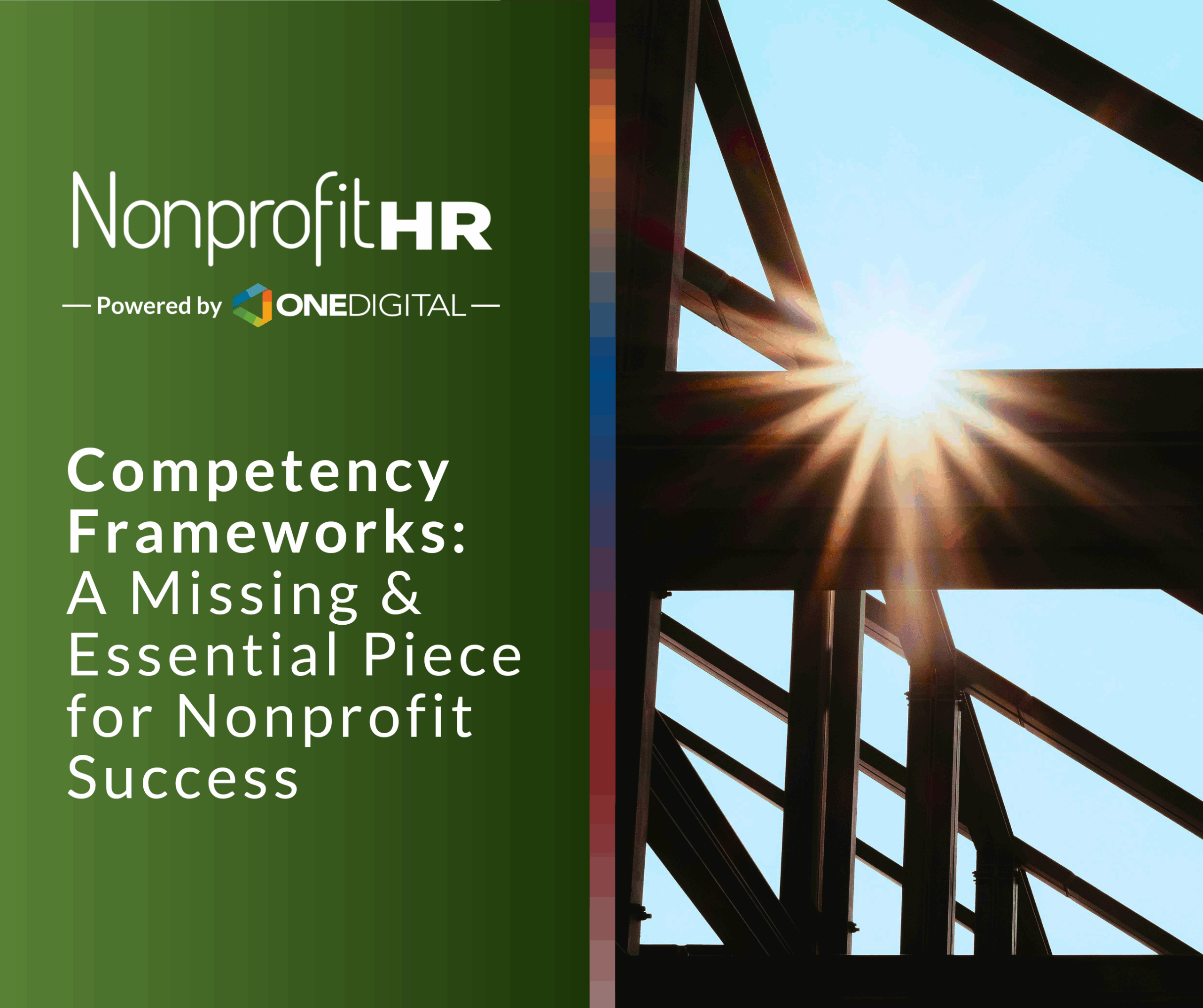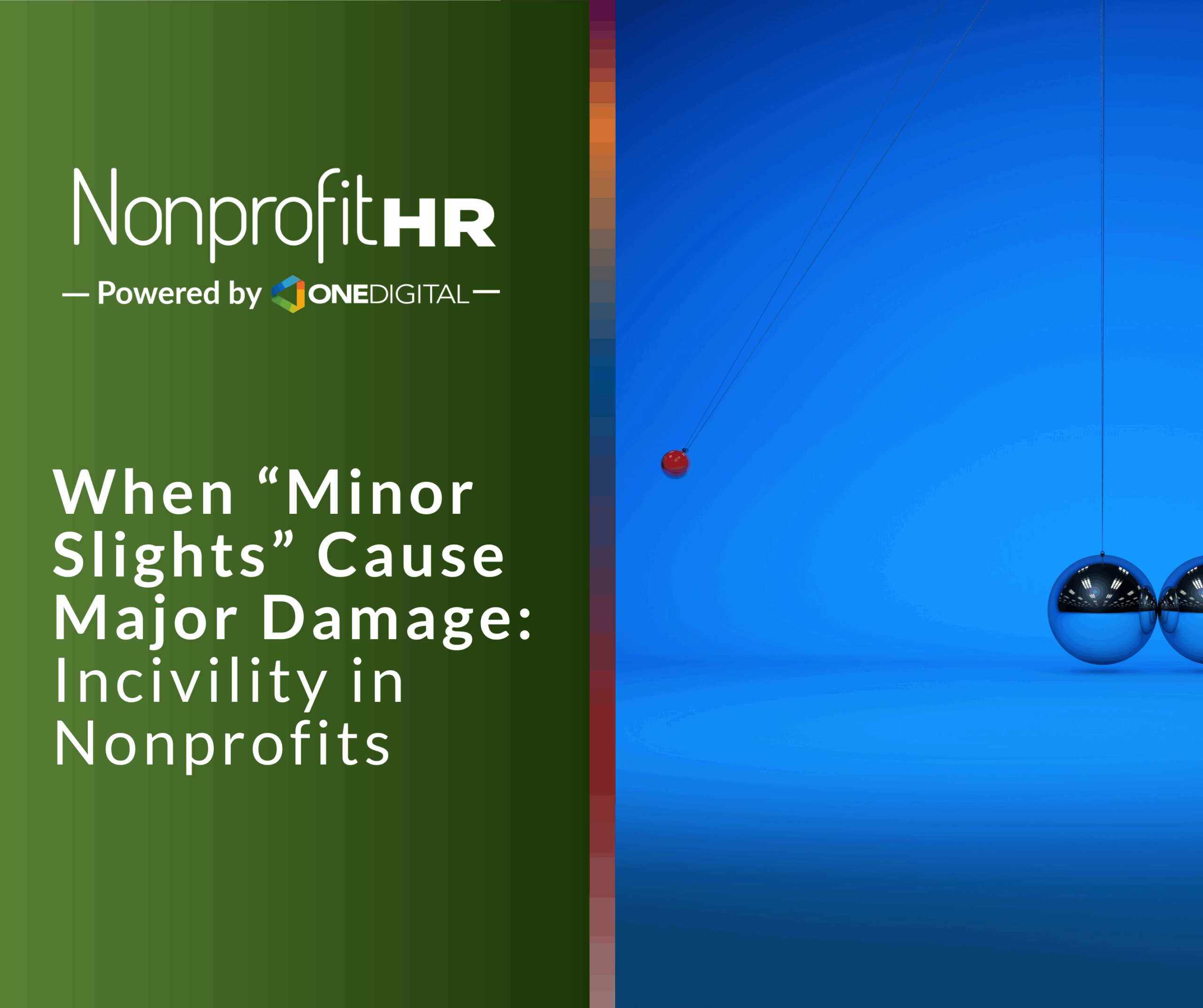WTOP: 5 ways nonprofits can…
Learning and development pathways provide the framework needed for staff to monitor their professional development and offer a clear roadmap for how staff can grow and progress in their roles. Pathways solve three essential needs. First, they solve the needs of individual employees to grow in their roles and develop in their positions. Second, they help leaders keep a clear eye on the needs of each employee and their unique strengths. Third, pathways help organizations reach their strategic and business goals to advance their missions. Overall, pathways help to prime an organization for the future, fill in skills gaps with current staff, offer greater stability and allow organizations to better forecast and build out their workforce.
Successful pathways are not static. In order to ensure that pathways continue to meet the needs of employees and organizations, they should be revisited regularly and at the very least when the organizational strategic plans are revisited. The refining of pathways involves dialoguing with staff, listening to leadership and responding to changing organizational goals. When career pathing is closely aligned to the strategic planning process it makes it easier to refine pathways to fit the needs of an organization and to carve out time needed to ensure pathways actually meet unique organizational needs.
Some of the benefits of developing clear career pathways for employees include higher morale and engagement, greater buy-in for the mission, accrued commitment to the organization, deeper loyalty and higher retention rates. In fact, 44% of respondents to the 2021 Nonprofit Talent Retention Practices Survey indicated a “lack of opportunity for upward mobility or career growth” as a primary reason for voluntary turnover in their organization. Robust learning and development pathways also add to employer branding efforts and help to attract high-performing talent that are development oriented. These benefits are valid means for organizations to retain staff and maximize the performance of their workforce. They also support the business case for organizations to facilitate the development of staff.
Primary Reasons for Voluntary Turnover

Source: 2021 Nonprofit Talent Retention Practices Survey Results
Getting the most out of pathways, however, requires a strategic and sustained approach that is closely aligned with an organization’s overall strategic plan and mission. An organization’s strategic plan, objectives and goals inform the creation and refinement of staff development. To make the most of developmental pathways, however, they should ideally be created prior to people being in the roles for which the pathways are designed. Why? Because pathways are based on business needs and the organization’s strategic direction. To ensure this mission alignment, a clear trajectory for each position should be created as each role is developed and structured.
Ceilings, Flat Structures and Lateral Moves
While there are natural ceilings for some roles, opportunities still exist for employees to grow and develop within those roles. Cross-training for breadth, focusing on creating depth of knowledge and clarifying opportunities for lateral movement all help to satisfy employees’ needs for development while broadening the skill sets that exist with an organization. Technical tracks, for example, allow organizations to create challenges for employees and broaden where they are professionally. At the American Foreign Service Protective Association (AFSPA), technical tracks are aligned with compensation to allow for, and encourage, staff to grow in their current roles. Providing access to training is also critical to investing in continuous growth. AFSPA employs a Learning Management System that offers a robust library of courses and uses this library to structure a three-tier training as a means to ensure the professional growth of their staff. The first tier of the training is mandatory for all staff and provides a standard baseline of knowledge for employees. Tier two is focused on required departmental training that is designed to build the skills within each department. Finally, the third tier is open for employees to explore topics of professional and personal interest. This approach allows AFSPA to provide opportunities for growth by providing access to learning.
For organizations with flat structures, learning and development opportunities are even more important to keep staff engaged. With flat organizations, it is often the case that more has to be done with fewer resources. Employees are often expected to take on more varied responsibilities within flat organizations. The broader the skill set of employees, the easier it is to make up for the gaps that exist when an organization has limited roles. It is imperative, however, to be clear with employees at the onset in order to manage expectations for vertical growth. Ideally, if a pathway for vertical growth does not exist or is limited, that fact should be mentioned as early as the interview process. Create the space to hear employee expectations and share how the organization can develop talent outside of traditional vertical movement up and into new roles. Frustration and dissonance most often build when employees do not know the trajectory for growth ahead of time and have expectations to be able to grow upward. This is why it is even more critical to keep career development conversations alive and well even without specific vertical promotions. These development conversations should provide the forum to hear from employees about the skills that they want to learn.
| Example approach to current and future leadership development needsThrough the AFSPA Academy, the organization provides mandatory executive coaching to all supervisors that goes beyond task-oriented management to perfecting leadership and thinking within a strategic framework. All people managers are required, regardless of years of experience, to take eight sessions at a minimum plus additional courses. In the academy, leaders are provided with a broad philosophical understanding of leadership that includes information on management frames, insights on hiring smart, requirements of HR employment law and the workings of strategic thought. Basic requirements of the academy are five classes at roughly 3.5 hours each, taken at a frequency of one class per week. Besides the mandatory sessions, leaders are also able to take ongoing training on leadership topics related to what they are interested in. |
Obstacles, Solutions and the Importance of Culture
Some common obstacles to developing clear career pathways are a lack of knowledge, time and culture challenges. Many organizations struggle with developing and refining pathways simply because they have never created them before or they may be tied to the way things have been done in the past. Also, managers may not know how to craft tasks that provide valuable opportunities for learning. Discomfort with failure may also exist with managers especially when it comes to learning on the job and dealing with correcting possible mistakes. Another common obstacle for developing pathways is time. Confirming ROI in a timely manner is a significant obstacle especially when it comes to prioritizing pathway development because the results are seemingly intangible or more long term in nature.
HR leaders can, however, overcome these obstacles by explaining to leadership the importance of pursuing development and the pitfalls of not doing so. Turnover, employee dissatisfaction, lack of engagement and ill-positioned staff are all critical issues that impact an organization’s mission and financial performance. Committing to clear staff development is just good business. It is also impactful when HR leaders engage in dialogue with leadership about the skills and competencies needed to ensure the success of a project or program and ultimately the mission itself. If staff is to deliver desired results and meet the organization’s mission, then investment in staff is unavoidable. To allay concerns and assuage fears, HR managers can simply ask about them and tie pathway solutions back to strategy, succession planning and workforce planning needs.
Finally, there is a large cultural component to developing successful pathways. Pathways are most successful in environments that celebrate and value continuous development. In particular, it is leadership that plays a key role in building and maintaining a culture that values development and is encouraged from the top down. Another essential component is that staff must also be willing and motivated to commit to continuous development. While willingness and motivation are individual factors, they can be influenced from the top down. As a result, it becomes the task of HR leaders to keep a pulse on the organizational culture and put measures in place to ensure they are forging a culture that values development.
Equity Considerations
Staff should see and feel that there is fairness in the organization’s learning and development approach. When it comes to equity, perception matters. How employees perceive their access to development in relation to other staff can influence if and how an employee takes advantage of the opportunities presented to them. While there will be organizational goals for development, individuals should also have the ability to meet their goals for growth as long as they fit within the organizational framework. Frequent communication and standardization are two ways to shape employee perceptions about equity in access to professional development opportunities. There should be clarification of the process, budgetary limitations and the total development budget available to staff. Standardization is also critical. A lack of standardization can lend itself to perceptions of favoritism. There needs to be a balance of offerings and communication of what is available to everyone. Clear communication and standardization of opportunities also help staff to feel empowered to take ownership of their own development.
In closing, learning pathways are dynamic and driven by the desired strategic direction of the mission while ensuring there are avenues or opportunities for staff to give feedback and take ownership of their professional development. In determining whether or not to commit to developing a holistic approach to staff development, consider the following thoughts: Talent has now come to expect leadership, as opposed to management, in their professional journeys. Also, it is holistic approaches to development that help organizations meet their established goals through ensuring that their staff is equipped with the skills needed to meet their missions.
| Contributing Authors | ||
 |
 |
|
| Alexandra Taylor, MPA Consultant Strategy & Advisory and DEI Nonprofit HR [email protected] |
Dr. Antione Smith, SPHR, SHRM-SCP Sr. Director of HR & Administration American Foreign Service Protective Association |






























